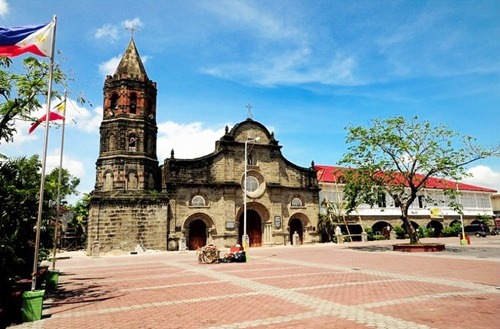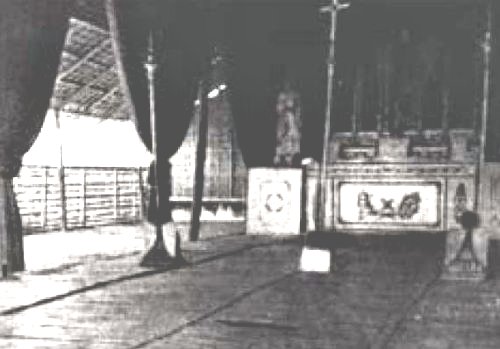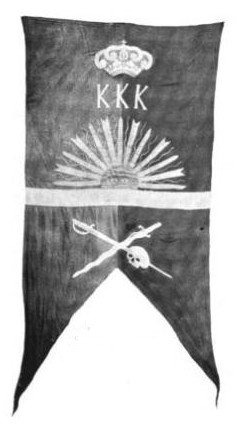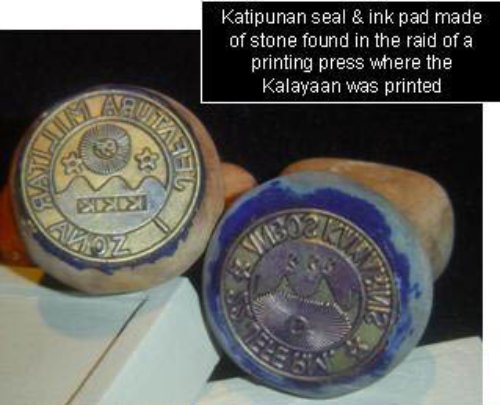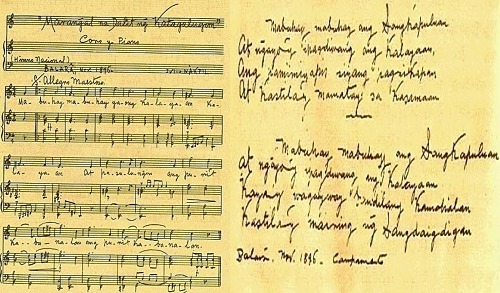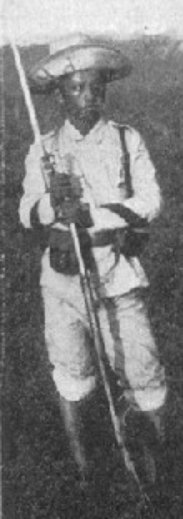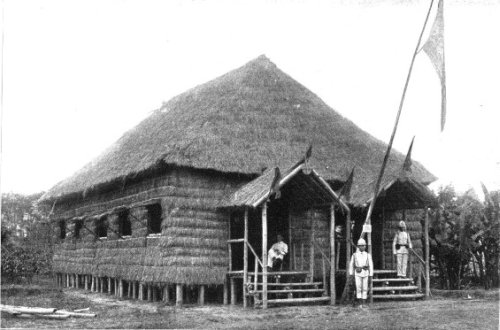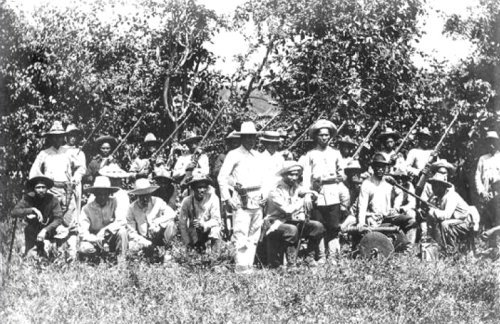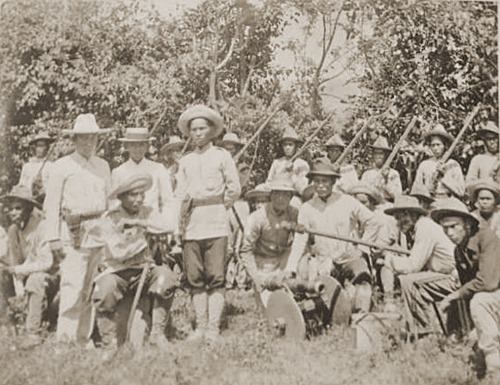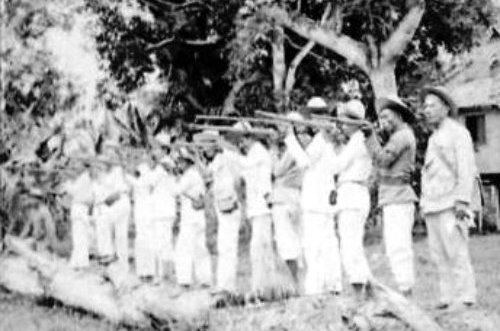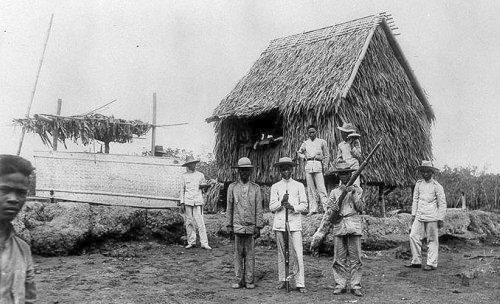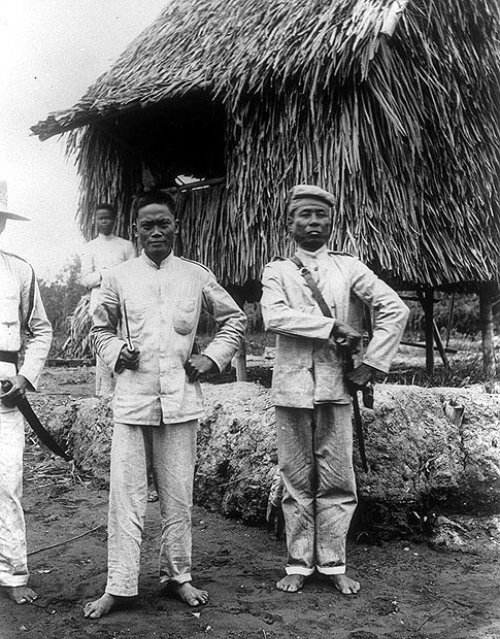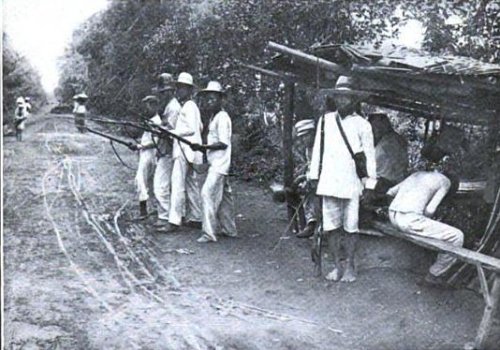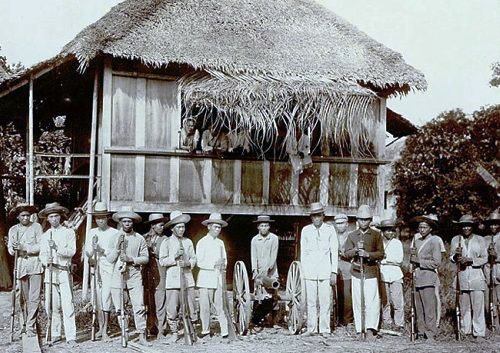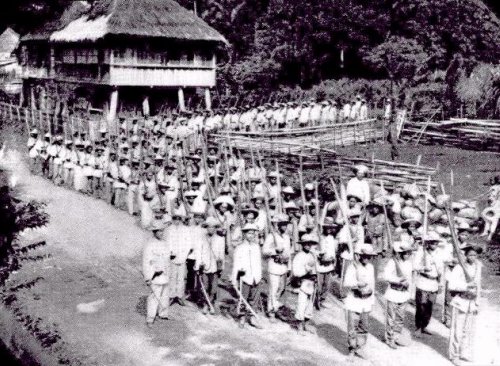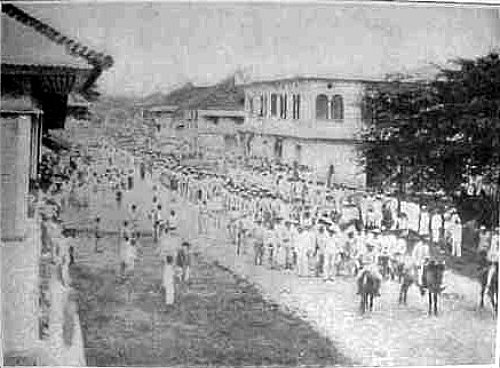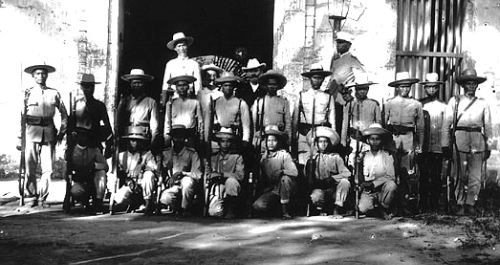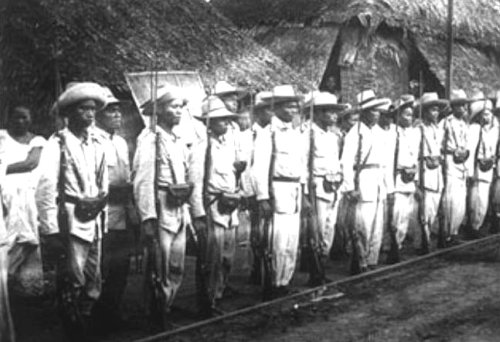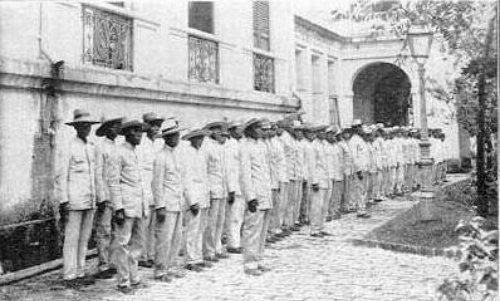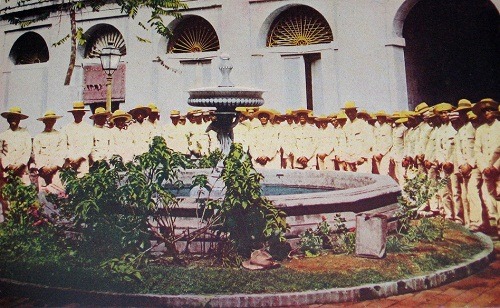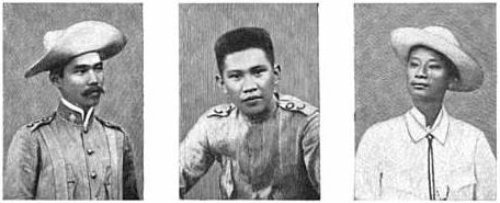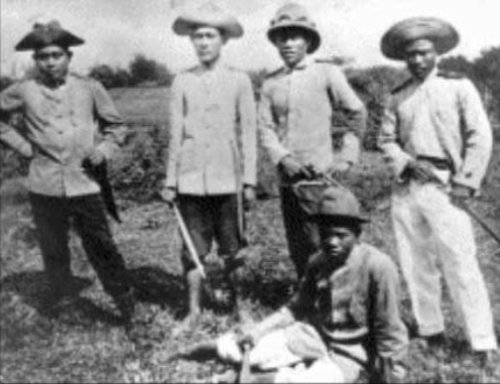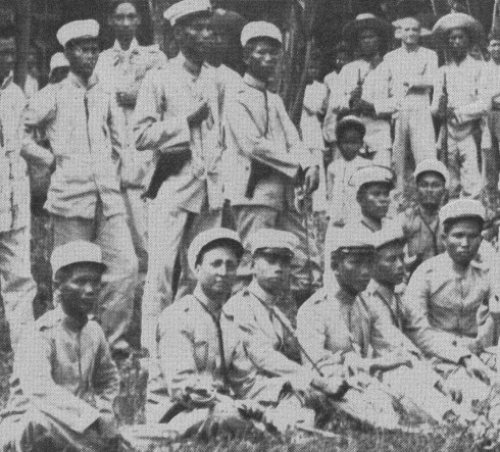The Philippine Army: From “Katipuneros” to “Soldiers”
The Katipunan or KKK was founded by Filipino rebels in Manila on July 7, 1892 (Long name: Kataas-taasang Kagalang-galangang Katipunan ng mga Anak ng Bayan or �Supreme and Venerable Society of the Children of the Nation”).
The founders —all freemasons— were: Andres Bonifacio, Ladislao Diwa, Teodoro Plata, Deodato Arellano, Valentin Diaz, Jose Dizon and a few others.
They met secretly at Deodato Arellano’s house at #72 Azcarraga (now Claro M. Recto Avenue), near Elcano Street, Tondo district.
The men gathered around a flickering table lamp, performed the ancient blood compact, and signed their membership papers with their own blood. They agreed to recruit more members by means of the triangle method; an original member would take in two new members who did not know each other, but knew only the original member who took them in. Thus, original member A, for instance, would take in new members B and C. Both B and C knew A, but B and C did not know each other. Also agreed upon during the meeting was the payment of an entrance fee of one real fuerte(twenty-five centavos) and a monthly due of a media real (about twelve centavos).

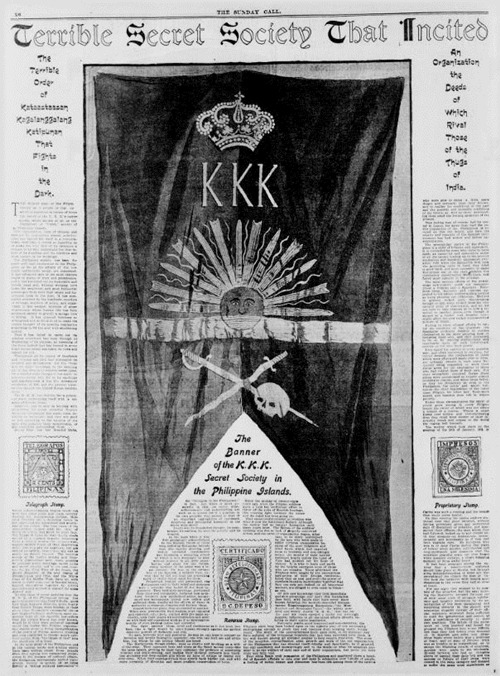
Thus the Katipunan was founded on a radical platform, namely, to secure the independence and freedom of the Philippines by force of arms.
The San Francisco Call, Sept. 24, 1899, Page 27


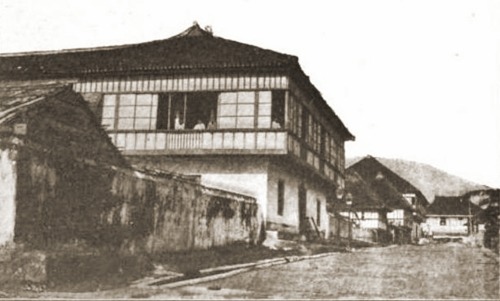
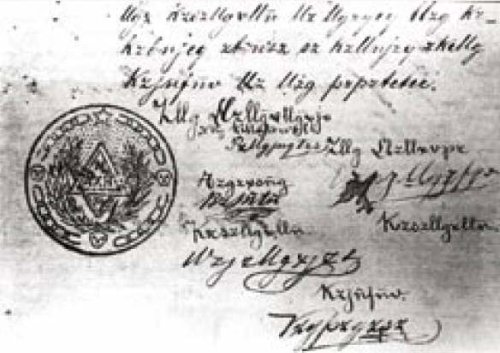
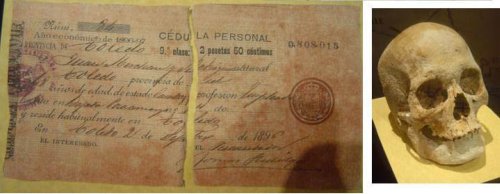

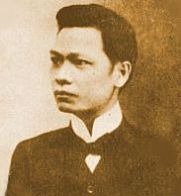
At the time, the term �Filipino� applied solely to Spaniards born in the archipelago; the natives were called Indios.
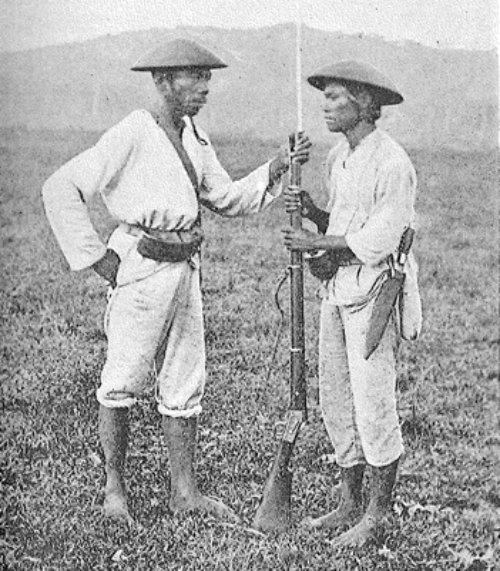
The premature discovery of the secret militant society on Aug. 18, 1896 forced the Katipuneros, as the members called themselves, to open hostilities.
The first major battle of the revolution took place on Aug. 30, 1896 when the Katipuneros attacked but failed to capture the Spanish polverin (powder depot) and deposito (water reservoir) in San Juan del Monte; 153 Katipuneros and 2 Spanish soldiers died.
As the rebellion progressed, a split developed between the Magdiwang faction (identified with Supremo Andres Bonifacio) and the Magdalo faction (loyal to Emilio Aguinaldo), both situated in Cavite Province.
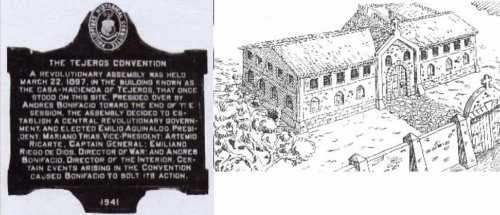
At the Tejeros Convention on March 22, 1897 held in Barrio Tejeros, San Francisco de Malabon (now General Trias), Cavite Province, the delegates voted to do away with the Katipunan. They argued that the insulated fragmentation that had aided the Katipunan’s secrecy had outlived its usefulness; in a wide-open national war for independence, unified leadership was required. A well-defined structure was needed to steer a combat force of thousands. From a small circle of conniving men and women, membership had grown to about 15,000 to 45,000 patriots (up to 100,000, according to some estimates; the previous figures, considered as more credible, were supplied by the Ilocano writer and labor leader, Isabelo de los Reyes, who was born in 1864 and died in 1929).
Bonifacio did not strongly object; the convention went ahead and formed the “Pamahalaang Tagapamatnugot ng Paghihimagsik” or Central Revolutionary Government.
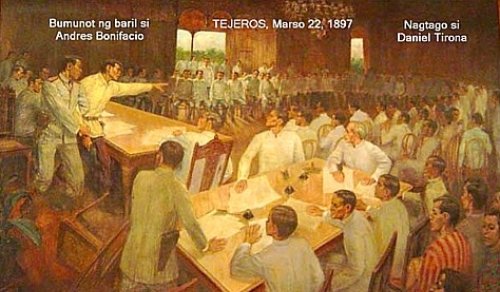

Feeling grievously insulted, Bonifacio hotly declared that by virtue of his authority as Katipunan Supremo, he was voiding and nullifying the decisions of the convention. He stormed out of the convention and drafted his own government and army.
Andres Bonifacio, hailed as “The Great Plebeian”, is depicted in The Anaconda Standard, Anaconda, Montana, issue of July 3, 1898, page 18, wearing a coat with a white bow tie.

Bonifacio and his brother Procopio were arrested, tried and convicted of treason; they were executed on May 10, 1897.
(Andres Bonifacio had 4 years of formal schooling compared to 7 years for Emilio Aguinaldo. However, while Bonifacio wrote and spoke good Spanish, Aguinaldo was barely able to speak it).
The Revolutionary Government unified the ragtag Katipunero rebel forces into a cohesive Philippine Revolutionary Army organized along European lines. It gave each conventional unit a nomenclature and organization. The army adopted two official names: in Tagalog, “Hukbong Pilipinong Mapanghimagsik” and in Spanish “Ej�rcito Revolucionario Filipino”.
General Artemio “Vibora” Ricarte was designated as Captain-General (Commanding General). He held this post from March 22, 1897 until Jan. 22, 1899 when he was replaced by General Antonio Luna.
When independence was declared on June 12, 1898, the Philippine Revolutionary Army became the Philippine Republican Army. Aguinaldo replaced Bonifacio�s official anthem with Marcha Filipina Magdalo, a composition of fellow Cavite�o Julian Felipe; this became the present-day Philippine National Anthem (Lupang Hinirang).
The first Philippine Army used the 1896 edition of the Spanish army’s Ordenanza del Ejercito to organize its forces and establish its character as a modern army. Rules and procedures were laid down for the reorganization of the Army, adoption of new fighting methods, regulation of ranks, adoption of new rank insignias and a standard uniform called rayadillo.
Orders and circulars were subsequently issued covering such matters as building trenches and fortifications, enticing Filipino soldiers in the Spanish Army to defect, collecting empty cartridges for refilling, prohibiting unplanned sorties, inventories of captured arms and ammunition, fund raising, purchase of arms and supplies abroad, unification of military commands, and exhorting the people to give any material aid, especially food, to the soldiers.
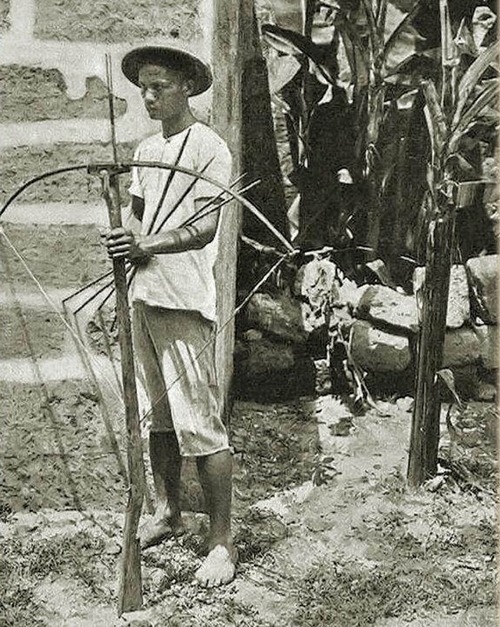
Sandatahanes, militiamen aged 15 to 50, were equipped with bows and arrows to partially meet the acute lack of arms,
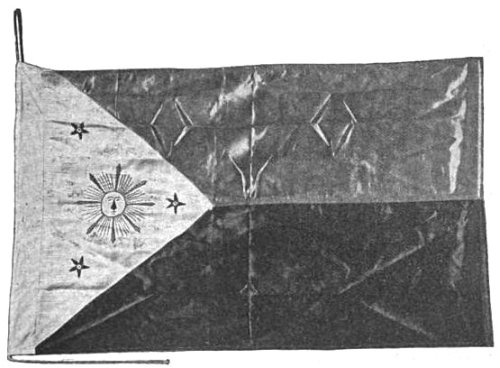
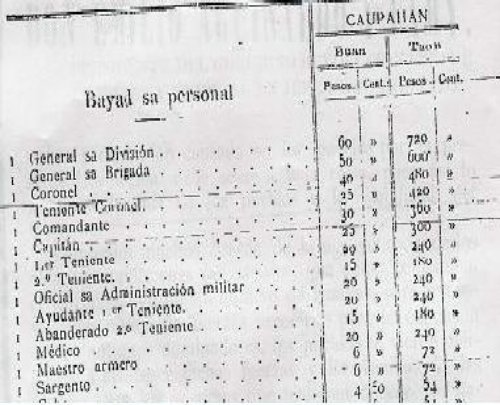
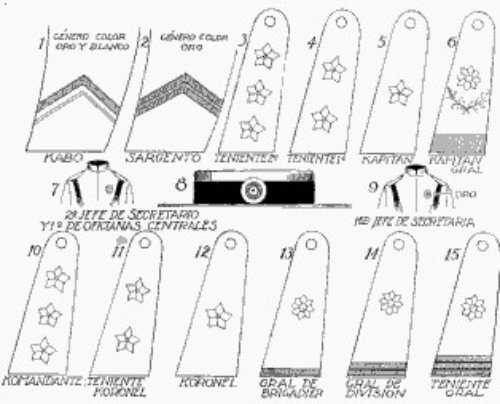

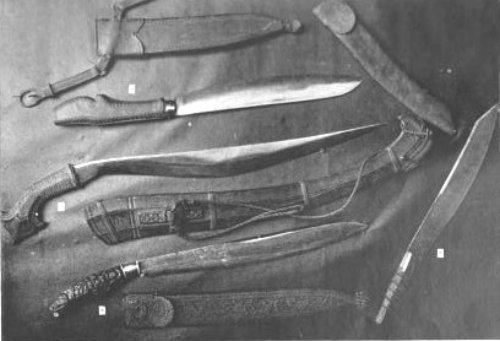

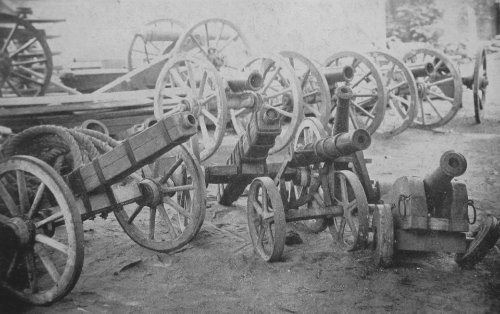

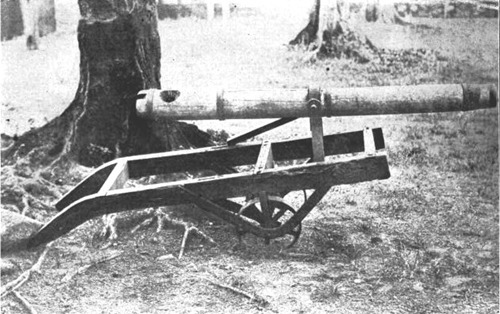
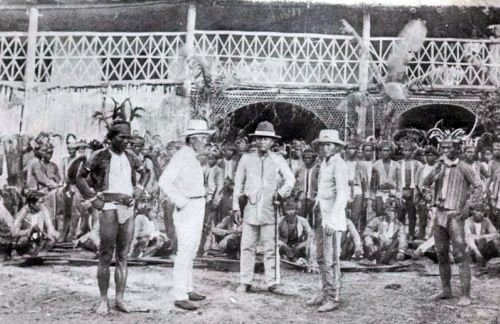
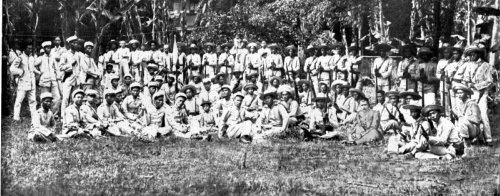
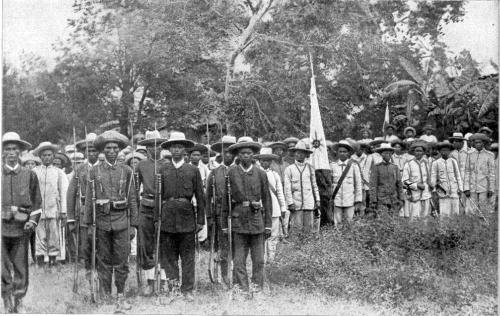
The army was divided into an active and a volunteer force. The Active Army was organized into regiments, companies and batteries. In turn, the companies were divided into soldiers with firearms and those without, the duty of the latter – the proportion of five to each rifleman – being to keep themselves close to the rear of the firing line and secure the guns of men who are disabled. The function of the Volunteer Army was the gathering and storing of food supplies and obtaining iron and copper from every possible source for the fabrication of arms. It was also its duty to search the fields for projectiles which had failed to explode, to carry food to the troops, to strengthen daily the defenses and deploy others to suitable sites.
Academia Militar – First Philippine military school
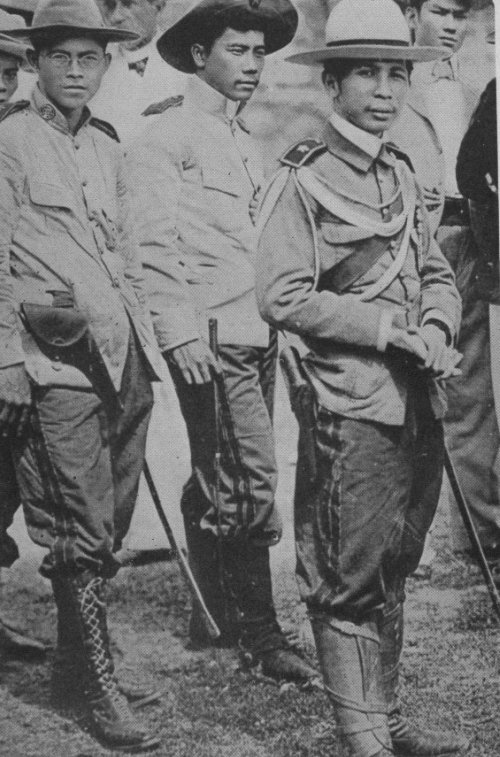
On the recommendation of General Antonio Luna, General Emilio Aguinaldo authorized the creation of a military school for officers.
On Oct. 25, 1898, the Academia Militar was established at Malolos, Bulacan with Colonel Manuel Bernal Sityar, hijo (meaning junior), as Director.

Sityar was the first to suspect the existence of a revolutionary movement. On July 5, 1896, he reported to the Civil Governor of Manila that certain individuals, especially in Mandaluyong and San Juan del Monte, were enlisting men for unknown purposes, making them sign in pledge with their own blood. But his report did not alarm the colonial authorities. Fifty-six days later, on Aug. 30, about 800 Katipuneros assaulted the polverin (Spanish powder magazine) at San Juan del Monte, igniting the Philippine Revolution. (153 Katipuneros and 2 Spanish soldiers died in this first major battle of the revolution).
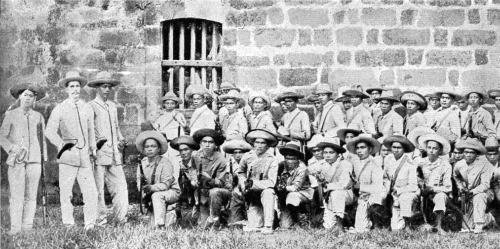
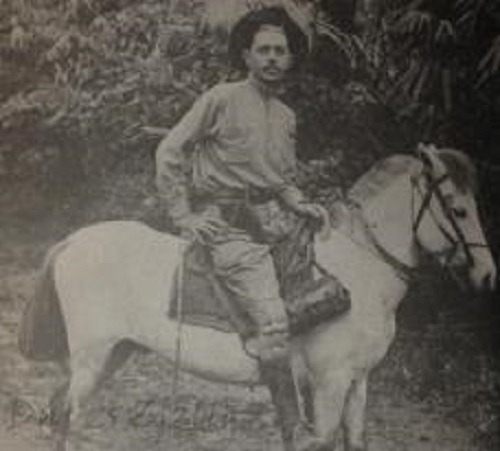
Sityar later defected to Aguinaldo’s army at San Francisco de Malabon (now General Trias), Cavite on May 28, 1898. He declared, ” I have served the country of my father with blood. Now I will serve the country of my mother with blood”. Colonel Sityar served as aide-de-camp and assistant chief of staff to General Emilio Aguinaldo. In the Malolos Congress which opened on Sept. 15, 1898, he represented the province of Laguna.
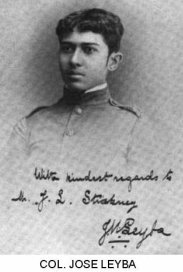
On that Christmas day, Aguinaldo, wishing to spare the 5 women in his entourage from further hardships (Aguinaldo’s wife and sister, Sityar’s wife and Col. Jose Leyba’s 2 sisters) ordered Sityar and a certain Colonel Paez to accompany the women and surrender to the Americans in Talubin. [Colonel Leyba was Aguinaldo’s adjutant and secretary].
Aguinaldo and his party reached Palanan, Isabela on Sept. 6, 1900. Here, Aguinaldo was captured by the Americans on March 23, 1901.

After the surrender at Talubin, Sityar quit the military life and taught at the Liceo de Manila when it was founded in 1900. Curiously, in the same year, the Queen Regent of Spain made Manuel Sityar Knight of the Military Order of Maria Cristina.
Sityar was one of the founding members of the pro-American Partido Federal when it was organized on Dec. 23, 1900.
He died in 1927.

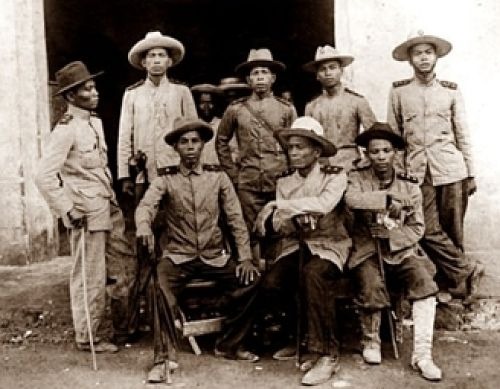
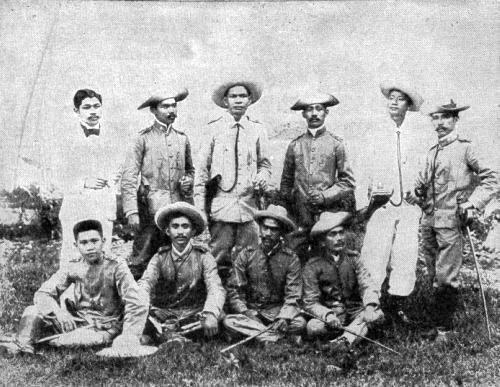
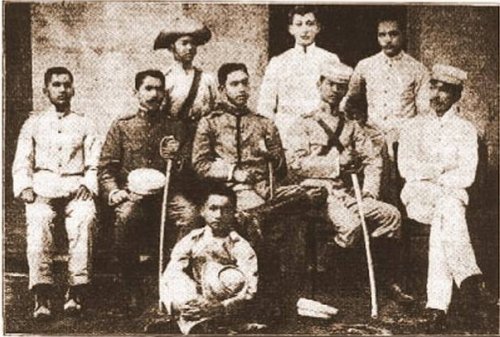
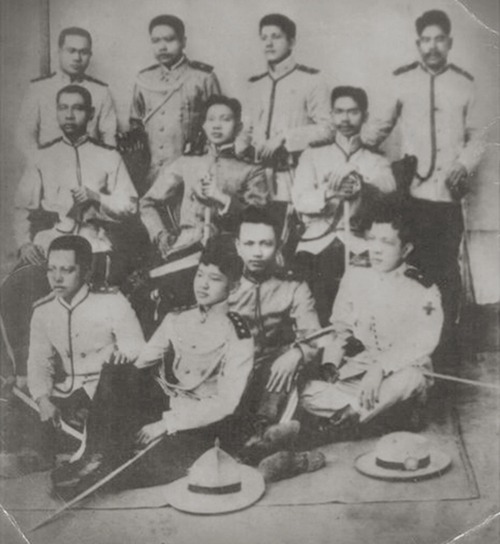
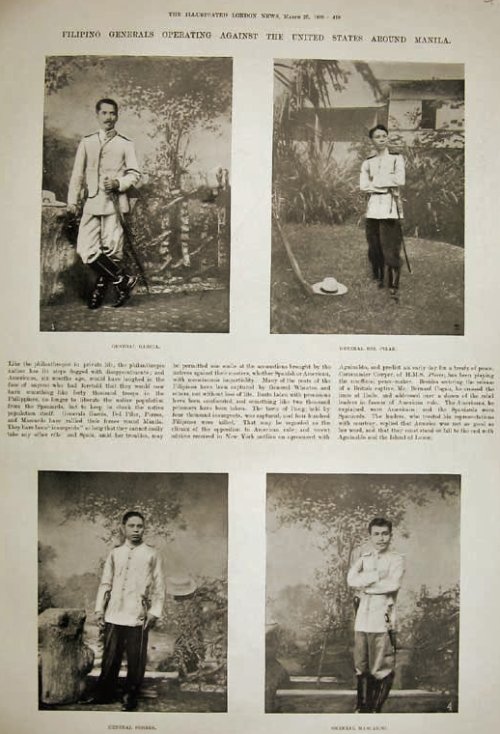
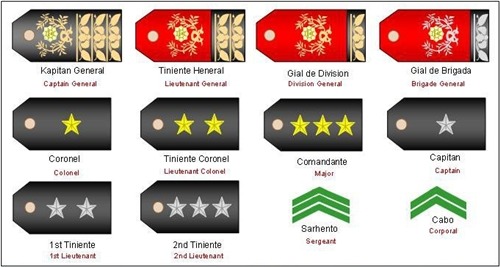
The Academia Militar‘s mission was to complete the training of all officers in the active service. The academy formally opened its classes on Nov. 1, 1898. The classes were divided into two sections, one for field officers from colonels to majors, and the other from Captains and below. Graduates became regular officers of the army. The course of instruction consisted of current orders and regulations, field and garrison regulations, military justice and penal laws, arithmetic and military accounting, geography and history, field fortifications, and map drawing and reading.
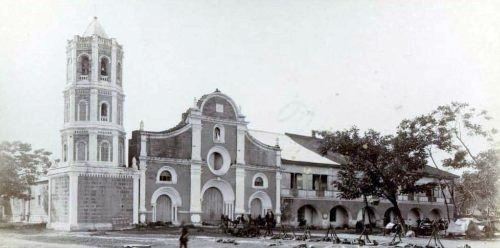
The Academia Militar was housed in the convent of Barasoain together with the Universidad Literia de Pilipinas and Instituto Burgos.
The Academia was deactivated on Jan. 20, 1899 due to highly escalated tensions between the Filipinos and Americans. Fifteen days later, on February 4, war broke out.
